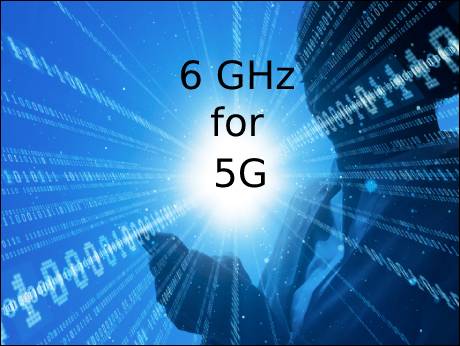
Focus on 5G
June 22 2021: The global future of 5G is at risk if governments fail to align on licensing 6 GHz spectrum, mobile communications industry body, GSMA, has warned:
The full speed and capabilities of 5G depend on the 6 GHz mid-band spectrum. Yet governments are already diverging: China will use the entire 1200 MHz in the 6 GHz band for 5G. Europe has split the band, with the upper part considered for 5G, but a new 500 MHz tranche available for Wi-Fi. Africa and parts of the Middle East are taking a similar approach.At the other extreme, the US and much of Latin America have declared that none of this valuable resource will be made available for 5G, but rather will be offered to Wi-Fi and other unlicensed technologies.
The 6 GHz band is essential not only for mobile network operators to provide enhanced affordable connectivity for greater social inclusion, but also to deliver the data speeds and capacity needed for smart cities, transport, and factories suggests GSMA. It is estimated that 5G networks need 2 GHz of mid-band spectrum over the next decade to deliver on its full potential.
“5G has the potential to boost the world’s GDP by $2.2 trillion,” said John Giusti, Chief Regulatory Officer for the GSMA. “But there is a clear threat to this growth if sufficient 6 GHz spectrum is not made available for 5G. Clarity and certainty are essential to fostering the massive, long-term investments in this critical infrastructure.”
The World Radiocommunication Conference in 2023 will provide the opportunity to harmonise the 6 GHz band across large parts of the planet and help develop the ecosystem.
5G is accelerating the digital transformation of all industries and sectors, unleashing new waves of innovation that will benefit billions. This technology is crucial for the environment and climate goals as connectivity replaces carbon. In order to reach all users, however, industries will require the extra capacity that the 6 GHz band offers.
GSMA calls on governments to:
-Make at least 6425-7125 MHz available for licensed 5G;
-Ensure backhaul services are protected; and
-Depending on countries’ needs, incumbent use and fibre footprint, the bottom half of the 6 GHz range at 5925-6425 MHz could be opened on a license-exempt basis with technology neutral rules.
GSMA is joined in its pitch for 6GHz by leading telecom players, Ericsson, Huawei, Nokia and ZTE.
What’s special about 6GHz for 5G?
“The 6 GHz range is a mid-band frequency and sits at a balancing point between coverage and capacity, providing the perfect environment for citywide 5G connectivity. Harmonisation of 6 GHz spectrum will provide more bandwidth and improve network performance”. From a GSMA blog,
Capacity to Power Innovation: 5G in the 6 GHz Band.
The GSM Association is an industry organisation that represents the interests of mobile network operators worldwide. More than 750 mobile operators are full GSMA members and a further 400 companies in the broader mobile ecosystem are associate members.(Wikipedia)